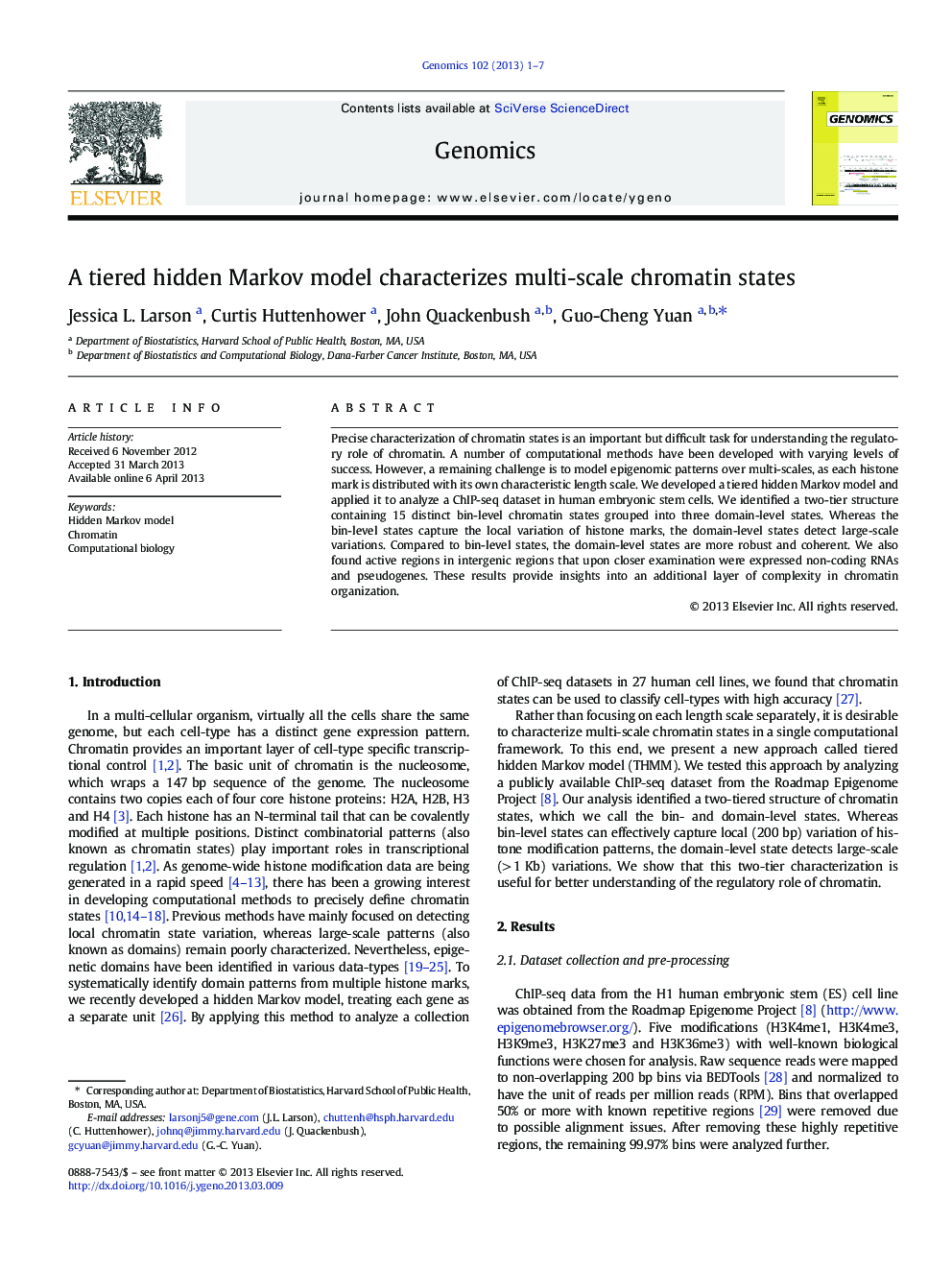| Article ID | Journal | Published Year | Pages | File Type |
|---|---|---|---|---|
| 5907915 | Genomics | 2013 | 7 Pages |
Abstract
Precise characterization of chromatin states is an important but difficult task for understanding the regulatory role of chromatin. A number of computational methods have been developed with varying levels of success. However, a remaining challenge is to model epigenomic patterns over multi-scales, as each histone mark is distributed with its own characteristic length scale. We developed a tiered hidden Markov model and applied it to analyze a ChIP-seq dataset in human embryonic stem cells. We identified a two-tier structure containing 15 distinct bin-level chromatin states grouped into three domain-level states. Whereas the bin-level states capture the local variation of histone marks, the domain-level states detect large-scale variations. Compared to bin-level states, the domain-level states are more robust and coherent. We also found active regions in intergenic regions that upon closer examination were expressed non-coding RNAs and pseudogenes. These results provide insights into an additional layer of complexity in chromatin organization.
Related Topics
Life Sciences
Biochemistry, Genetics and Molecular Biology
Genetics
Authors
Jessica L. Larson, Curtis Huttenhower, John Quackenbush, Guo-Cheng Yuan,
